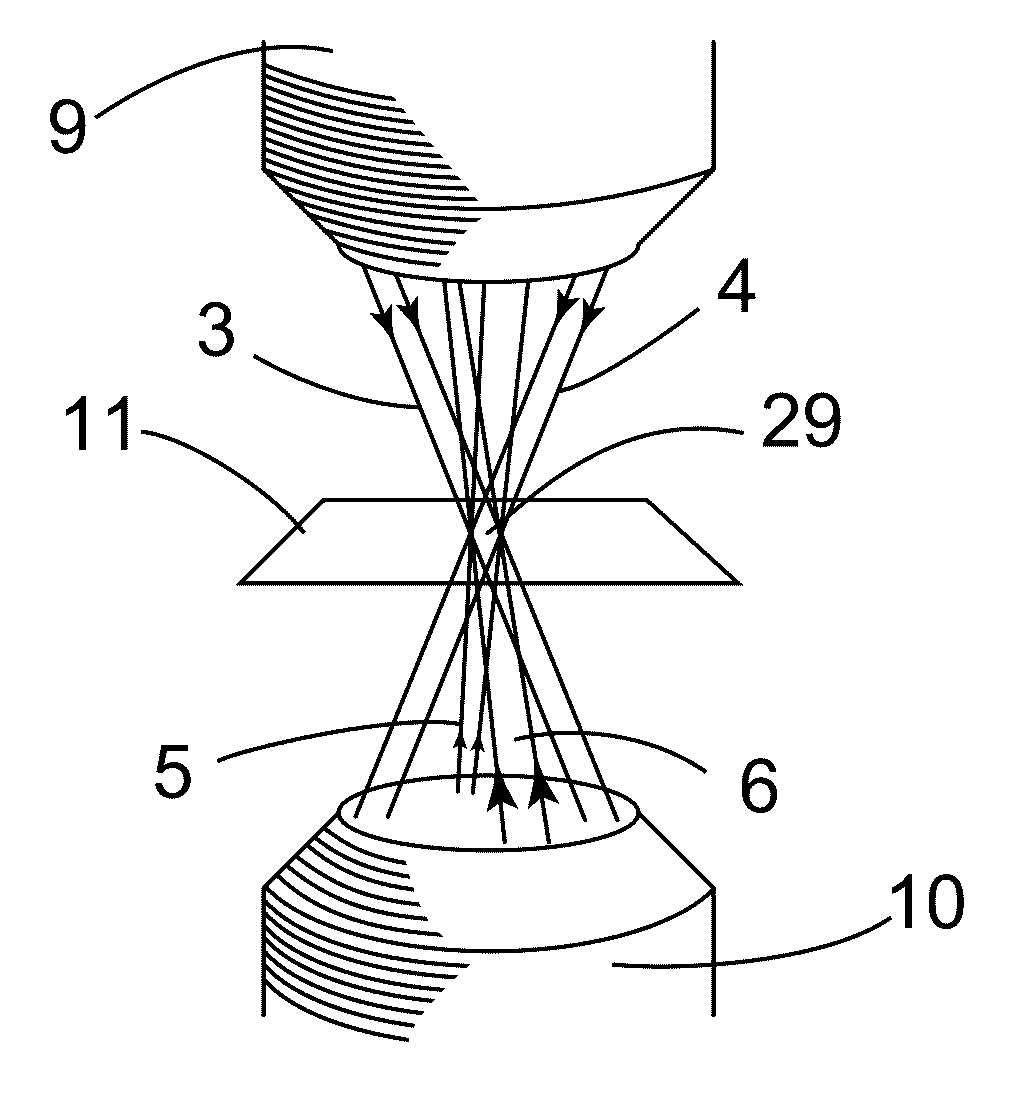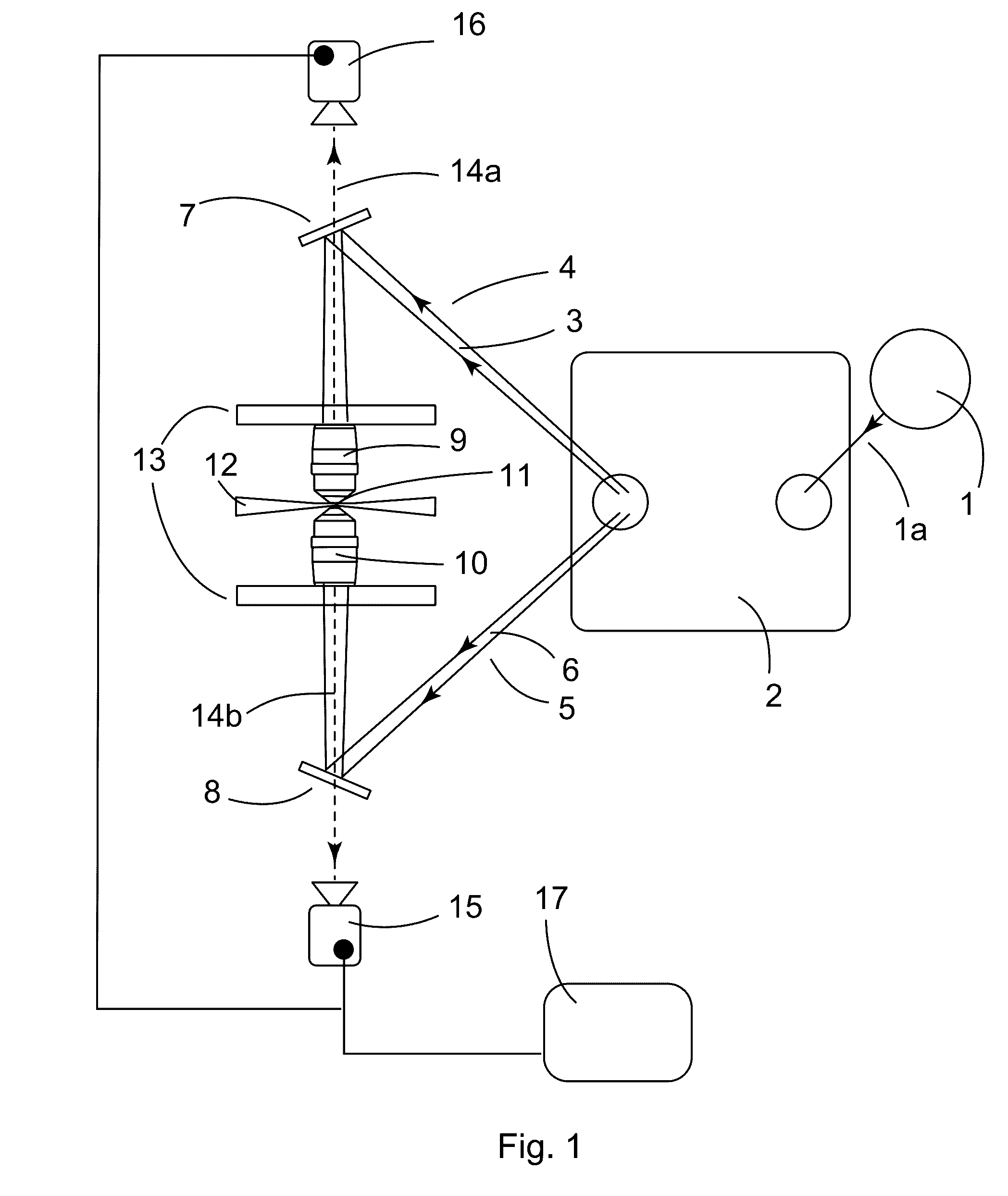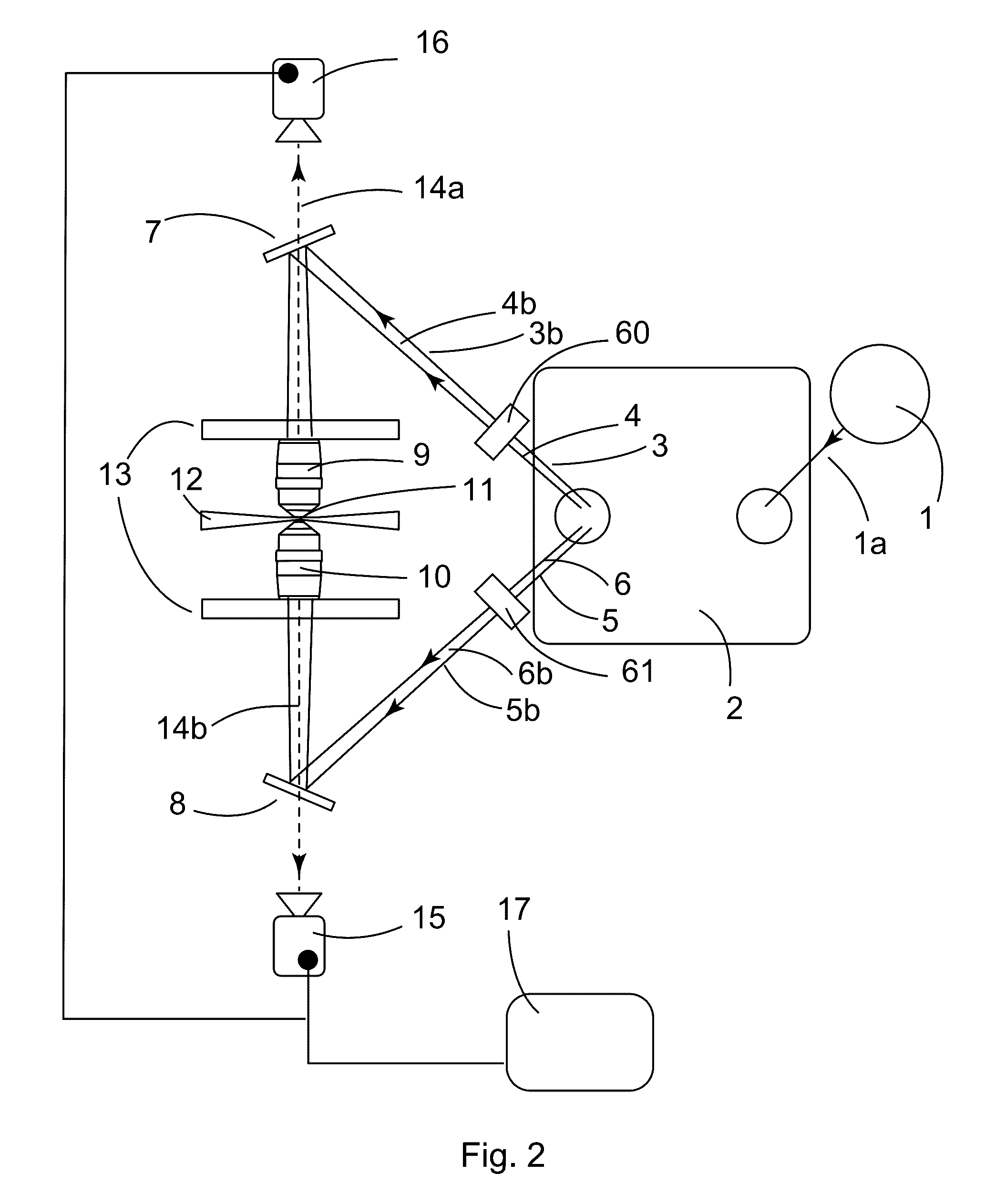3D tessellation imaging
a 3d tessellation and imaging technology, applied in the field of 3d tessellation imaging, can solve the problems of posing a formidable challenge to mapping neuronal interconnections in brain tissue volumes, unsatisfactory as a high-resolution volume mapping solution, and great difficulties, and achieves the effect of removing the time-consuming step of transforming sim, reducing the difficulty of transforming sim, and high imaging speed
- Summary
- Abstract
- Description
- Claims
- Application Information
AI Technical Summary
Benefits of technology
Problems solved by technology
Method used
Image
Examples
Embodiment Construction
[0028]A schematic representation of a 3D Tessellation Imaging (3DTI) setup is shown in FIG. 1. In a preferred embodiment, a single coherent input beam 1a from a light source 1 is split into several output beams 3, 4, 5, and 6 by beam conditioning optics 2. For example, the beam conditioning optics can be an assembly of beamsplitters, mirrors, and lenses that control the phase, beam direction, and beam focus in a manner well known to the art. In this embodiment, these output beams are then directed through an optical system comprised of steering mirrors 7 and 8 which aim the output beams into the rear aperture of two objective lenses 9 and 10 suitably mounted on a rigid and stable platform 13. The objective lenses recombine the beams in a predetermined region of overlap (see FIG. 3 for example) where a specimen 11 is positioned on a translating stage 12. The overlapping beams form a crystalline interference pattern (a 3D tessellation) used to illuminate selected portions of the speci...
PUM
 Login to View More
Login to View More Abstract
Description
Claims
Application Information
 Login to View More
Login to View More - R&D
- Intellectual Property
- Life Sciences
- Materials
- Tech Scout
- Unparalleled Data Quality
- Higher Quality Content
- 60% Fewer Hallucinations
Browse by: Latest US Patents, China's latest patents, Technical Efficacy Thesaurus, Application Domain, Technology Topic, Popular Technical Reports.
© 2025 PatSnap. All rights reserved.Legal|Privacy policy|Modern Slavery Act Transparency Statement|Sitemap|About US| Contact US: help@patsnap.com



